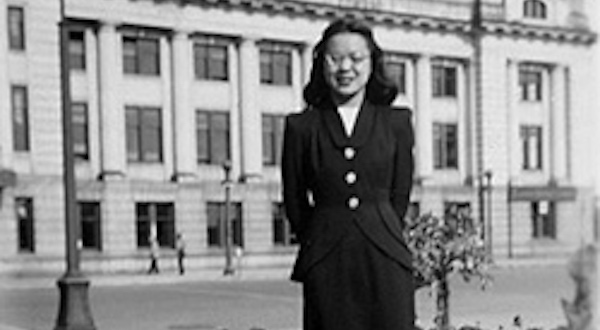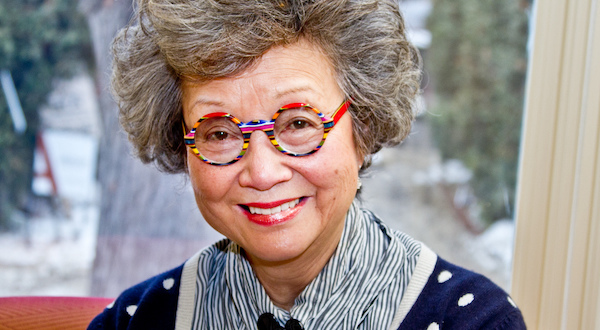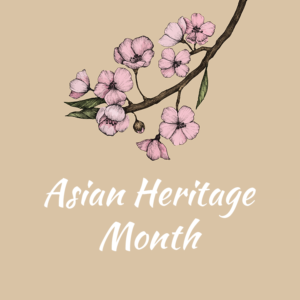Please note that the content of this page was prepared, updated, and featured throughout the month of May 2021. This page will now most likely stay relatively dormant until May 2022.
Asian Heritage matters year-round. Below are tons of interesting and important learning resources to explore.
Asian Heritage Month
May is Asian Heritage Month, a month designated to recognize and honour the accomplishments and contributions of members of the Asian community in our society. Throughout the month of May, we will be featuring a number of resources with the purpose of acknowledging, celebrating, and in some cases providing new knowledge.
Virtual Museum of Asian Canadian Cultural Heritage
The VMACCH enables Asian Canadians to share their heritage among themselves and with the rest of Canada. It exhibits the achievements and contributions of Asian Canadians to Canada. Featuring works by Asian Canadian artists, it encourages participation in the cultural life of Canada. The website is meant to connect Asian culture to other cultures, and show that it is part of the overarching Canadian culture. It is also a valuable teaching resource on Asian heritage and culture to schools. Visit the Virtual Museum >
Asian Heritage in Canada | The Canadian Encyclopedia
For Canada, Asia does not only exist ‘over there’. It is, has been, and will continue to be, right here, contributing to and shaping our country. Canada’s citizenry includes over 7.5 million people — almost 22 per cent of the population — who were born outside Canada. Recent immigrants to this country are more likely to have come from Asia and the Middle East than from Europe. Chinese ancestry, East Indian ancestry and Filipino ancestry are among the 20 most common ancestries reported by the Canadian population. See Asian Heritage content on the Canadian Encyclopedia >
Asian Canadian History
Learning Resources on the Japanese Internment
Internment of Japanese Canadians | The Canadian Encyclopedia
The forcible expulsion and confinement of Japanese Canadians during the Second World War is one of the most tragic sets of events in Canada’s history. Some 21,000 Japanese Canadians were taken from their homes on Canada’s West Coast, without any charge or due process. Beginning 24 February 1942, around 12,000 of them were exiled to remote areas of British Columbia and elsewhere. The federal government stripped them of their property and pressured many of them to accept mass deportation after the war. Those who remained were not allowed to return to the West Coast until 1 April 1949. Continue reading >
Japanese Canadian internment and the struggle for redress | Canadian Museum of Human Rights
On December 7, 1941, Japanese planes bombed the American naval base at Pearl Harbour, Hawai’i, entering the Second World War on the side of the Axis powers of Germany and Italy. This meant Canada was now at war with Japan. At that time, there was a sizeable Japanese Canadian population in British Columbia. Canadian military officials and the RCMP felt that the Japanese Canadian population posed no threat and opposed taking any punitive action against them. The federal government, however, disagreed. Continue reading >
General Overview of Japanese Canadian History
As World War II was drawing to a close, Japanese Canadians were strongly encouraged to prove their “loyalty” by “moving east of the Rockies” immediately or sign papers agreeing to be “repatriated” to Japan when the war was over. Many moved to the Prairie provinces, Ontario and Quebec. About 4,000, half of them Canadian-born were exiled in 1946 to Japan. Prime Minister MacKenzie King declared in the House of Commons on August 4, 1944: “It is a fact no person of Japanese race born in Canada has been charged with any act of sabotage or disloyalty during the years of war.” Continue reading >
Learning Resources on the Chinese Head Tax
Chinese Head Tax in Canada | The Canadian Encyclopedia
The Chinese head tax was enacted to restrict immigration after Chinese labour was no longer needed to build the Canadian Pacific Railway. Between 1885 and 1923, Chinese immigrants had to pay a head tax to enter Canada. Continue reading >
The Chinese head tax and the Chinese Exclusion Act | Canadian Museum of Human Rights
To understand the Chinese head tax and the Chinese Exclusion Act and the terrible effect these two policies had on generations of individuals, you need to know a little about the history of Chinese immigration to Canada… Continue reading >
Bamboo Shoots: Chinese Canadian Legacies in BC | Province of British Columbia
This resource offers a rich gallery of historical photographs, and a wealth of archival documents and personal stories to support what you have learned through the two resources above. Have a look >
Learning Resources on the Komagata Maru and Anti-Indian Immigration Policy
Komagata Maru | The Canadian Encyclopedia
The SS Komagata Maru was a chartered ship featured in a dramatic challenge to Canada’s former practice of excluding immigrants from India. This challenge took place in the spring and summer of 1914, on the eve of the First World War. Continue reading >
The story of the Komagata Maru | Canadian Museum of Human Rights
In 1914, many white Canadians were very hostile to non‐white immigration. In 1907, 10,000 people in Vancouver protested Indian immigration and then rioted through Vancouver’s Chinatown, scaring residents and destroying property. In 1908, the federal government made two provisions meant to prevent Indian immigration. Continue reading >
Those Canada Turned Away: Remembering the Komagata Maru Incident | Canadian Museum of Immigration
Komagata Maru was a steamship on which a large group of British Subjects attempted to emigrate from India to Canada, and were denied entry. It is an incident steeped in years of building racist and xenophobic sentiments directed towards people of Asian origin. Continue reading >
Booklists
23 books for kids and young adults to celebrate Asian Heritage Month in Canada | CBC Books
May is Asian Heritage Month in Canada. To celebrate, here’s a list of 23 great Canadian books for younger readers to check out! See book selection >
15 books by Asian Canadian authors to read for Asian Heritage Month | CBC Books
May is Asian Heritage Month. Celebrate by checking out one of these great Canadian books. See book selection >
Books with Asian, Asian American, and Pacific Islander Characters
From East Asia to the Middle East, from Southeast Asia to the islands of the Pacific, from California to Alabama, this list of more than 100 books covers a lot of geographical ground. See book selection >
Sélection de livres pour enfants en français pour le Mois du patrimoine asiatique
La bibliothèque publique d’Ottawa a préparé cette sélection de livres en français afin de faciliter votre famille à souligner le Mois du patrimoine asiatique. Vérifiez leur disponibilité auprès de votre bibliothèque scolaire ou municipale. Voir la sélection >
Asian American Book Lists for Kids
It used to be difficult for Asian American children to see themselves in childrens’ books. No longer: here are 40+ lists of Asian American books. See book selection >
100 Everyday Picture Books Starring Asian American Characters
A community-created list of 100 illustrated books with Asian American characters. See book selection >
L’autrice québécoise et vietnamienne Kim Thúy, et son roman « Ru »
Lauréate de plusieurs prix, l’autrice Kim Thúy a quitté son Vietnam natal avec sa famille à 10 ans pour fuir la répression du régime communiste. Leur évasion s’effectue dans des conditions extrêmement pénibles, dans la dégoûtante cale d’un bateau de pêche; ils se retrouvent ensuite dans un camp de réfugiés en Malaisie et seront finalement accueillis au Québec comme « réfugiés de la mer ». L’incroyable parcours des membres de cette famille ainsi que l’adaptation à leur nouveau mode de vie constituent la trame de Ru, le premier roman de Kim Thúy. Il relate les changements que vit une jeune fille alors qu’elle quitte un pays agité pour la sécurité d’une vie paisible. À sa sortie, Ru a fait un tabac au Québec. En savoir plus sur Kim Thúy >
A Kids Book about: Anti-Asian Hate
A simple yet powerful childrens’ book about Anti-Asian Hate. Racism is an important topic to cover with your members of your family. Get this free book >
Teaching Resources for Asian Heritage Month
Asian Heritage Month | Canada.ca
Asian Heritage Month is an opportunity for all Canadians to learn more about the many achievements and contributions of Canadians of Asian descent who, throughout our history, have done so much to make Canada the amazing country we share today. See online >
Asian and South Asian Heritage Month | Elementary Teachers’ Federation of Ontario
During Asian Heritage Month, we are invited to learn about the many achievements and contributions of Canadians of the diverse Asian heritage, to understand the historical journeys and ongoing struggles of diverse Asian communities, and to recognize individual and institutional racism both past and present, that have impacted the lives of many groups… Continue reading >
The Chinese-Canadian Experience | NFB
Resilience and perseverance are common elements found in the experiences of the Chinese diaspora. Chinese-Canadians, in particular, have had to navigate various levels of politicized racism, emotional turmoil and financial hardship in their adopted country. What emerges from each of these films and the stories they tell is the dignity, good humour and resourcefulness of their subjects.
Watch playlist for ages 6-14 >
Watch playlist for ages 14+ >
Looking Back: Quong Wing | Curio.ca
In 1912, a restaurant owner in Moose Jaw, Saskatchewan, is fined for breaking a law that prohibited Chinese business owners from hiring white women. With the support of the Chinese community, Quong Wing fights the case all the way to the Supreme Court. Watch video online >
Throwaway Citizens | Curio.ca
This documentary picks up pages of the bureaucratic paper trail which led to the ethnic cleansing of British Columbia – the internment of Japanese Canadians during World War II. There was never any legitimate security risk involved. Motive for the internment and confiscation of their property had everything to do with commercial jealousy and racism mixing with politics. Watch video online >
Teaching Resources on Anti-Asian Racism
Resources Addressing Anti-Asian Racism and Xenophobia | Smithsonian
On this page you will find resources in the following categories: Addressing anti-Asian racism and xenophobia, Activities and videos for students, families, and lifelong learners, Content complementing Social Studies units, and Resources about Asian American and Pacific Islander voices in literature. See these resources online >
Adressing Anti-Asian Racism: A Resource for Educators | Toronto District School Board & Elementary Teachers’ Federation of Ontario
This document provides a foundation for reflection, discussion and social justice action. It was created by a team of educators of Asian descent whose lived experiences, both personal and professional, knowledge and passion for social justice are reflected in its pages. Watch the presentation below or Download the PDF document >
Anti-Asian Racism Resources | HRSA
A set of educational resources on the history of Anti-Asian Racism. See these resources online >
Resources Guide: Responding to Anti-Asian Racism | University of Toronto
See these resources online >
Noteworthy Canadians of Asian origin
David Suzuki

Dr. David Suzuki is a third generation Canadian of Japanese origin, a Companion of the Order of Canada, and the recipient of 24 honorary degrees from universities in Canada and abroad. He is most known for founding, with his wife, the David Suzuki Foundation. Learn more >
Margaret Gee

Margaret Gee was the first woman of Chinese origin to be called to the Bar in British Columbia. She was born in Vancouver, and grew up in Chinatown. She reported in a 1957 interview that she liked being referred to as a “lady lawyer”, and had been “forced to face only a few racial incidents either at school, in university or her private practice.”
Adrienne Clarkson

The Right Honourable Adrienne Clarkson was the 26th governor general of Canada. She came to Canada as a child in 1942 when her family left Hong Kong after the colony surrendered to the Japanese. The Right Honourable Adrienne Clarkson was also one of television’s first female on-camera personalities. Learn more >
Jagmeet Singh

Born in 1979 in Scarborough (Ontario) to parents who had immigrated to Canada from the Indian state of Punjab, Jagmeet Singh and his family lived in Newfoundland before relocating to Ontario again. You may know him as the charismatic leader of one of Canada’s main political parties. Learn more >

This page is prepared and updated by the Western Québec School Board, with the help of its community.
Provide input, feedback, ideas, additional resources, or information about bugs on this page by email to fraymond@wqsb.qc.ca.
© 2022 Commission scolaire Western Québec / Western Québec School Board
